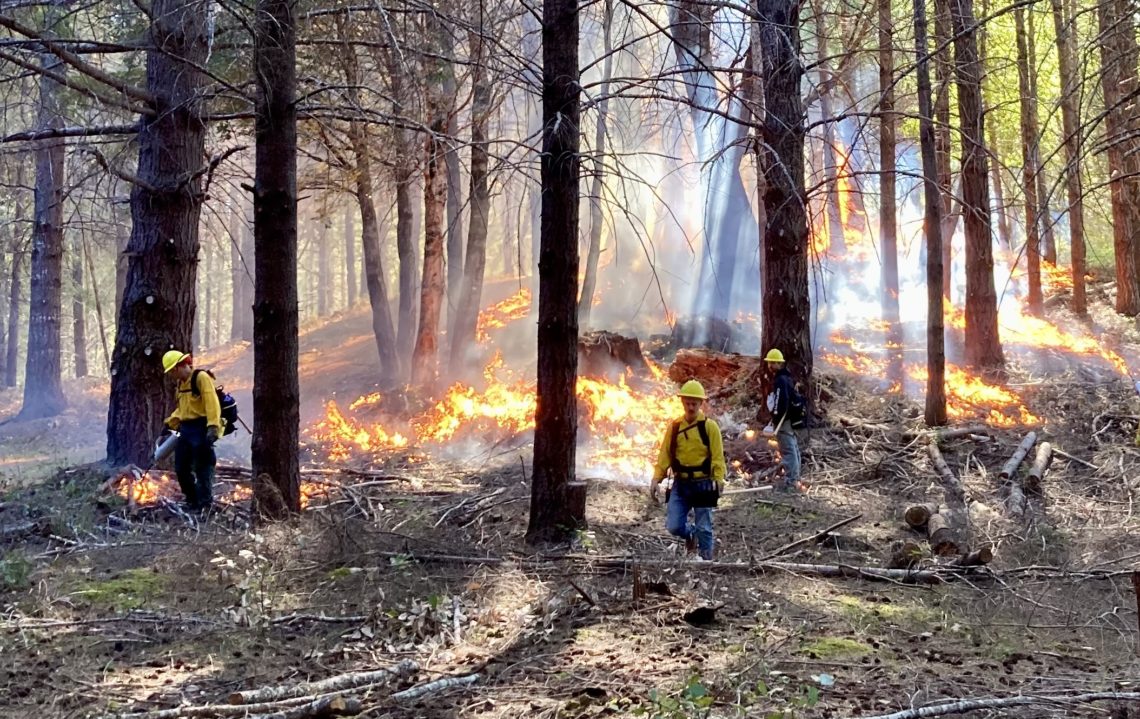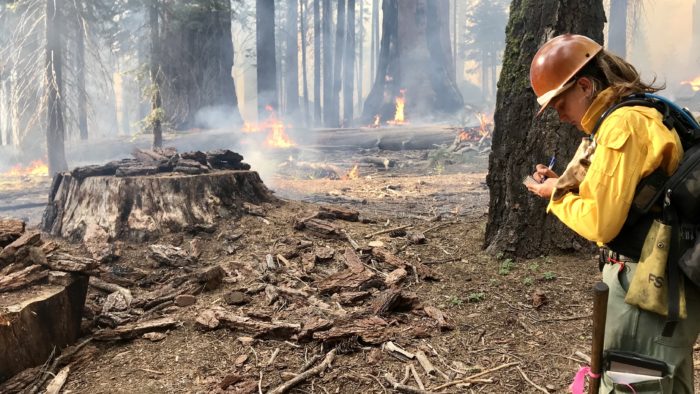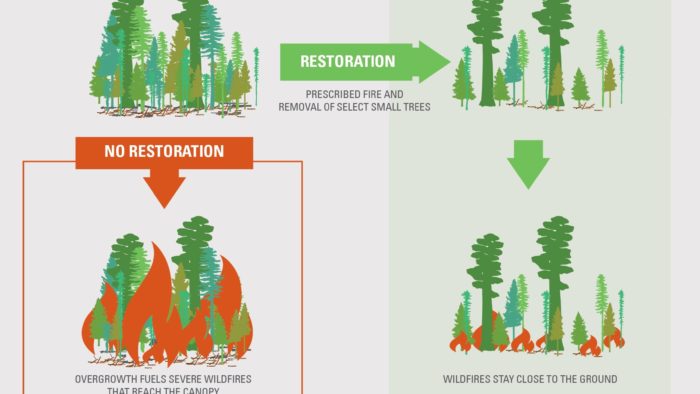Prescribed fire is one of several way we can build fire resilience in our forests
Fire is a natural and healthy component of both the coast redwood and giant sequoia forest ecosystems. For millennia, a constant cycle of low- to moderate-severity fire on the landscape has helped the trees regenerate, grow tall, and support an abundant array of wildlife. In recent decades a perfect storm of climatic changes and forest management practices has created conditions for the unprecedented high-severity fires we’ve seen in recent years.
What can we do to address this new challenge? Thankfully, there are a number of strategies around forest management that can help build fire resilience back into our coast redwood and giant sequoia forests.
One strategy is to continue the work of the League and others to protect forests and set them back on their natural path to old-growth qualities. Projects such as Redwoods Rising, which seeks to restore about 70,000 acres of damaged second-growth forests, can remove the unnatural density in these forests and free coast redwoods to grow to the scale of the trees that once filled the range. Another strategy is manually remove some of the smaller trees that have accumulated as a result of decades-long fire exclusion.

Ultimately, restoring fire is the most important approach because it does not just remove some of the trees, but it also reduces the woody debris on the forest floor, which is critical for reducing the risk of severe fire. Restoring fire also supports important ecological processes, including nutrient cycling, seedling regeneration (particularly in giant sequoia), and creation of habitat structures like trunk cavities.
Reintroducing fire can happen in two ways. In remote areas, it can include allowing lightning strikes to burn when the conditions are conducive to good ecological effects. This is usually more appropriate in higher-elevation forests where there are cooler, wetter conditions, which is more conducive to restorative effects. In the warmer, lower-elevation forests, prescribed fires generally must be used before wildfires in the hot summer can burn through without causing undesirable consequences. Prescribed fires are intentionally set by fire managers under very controlled conditions, and they are generally conducted in spring and fall, when the temperatures are lower and humidity is higher.

